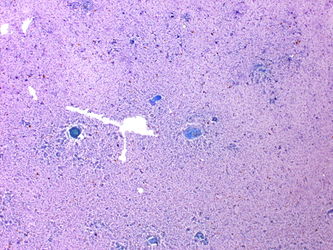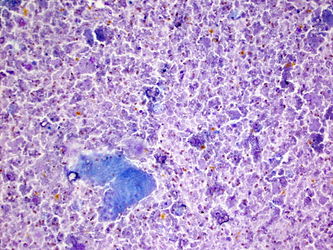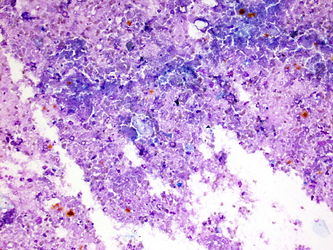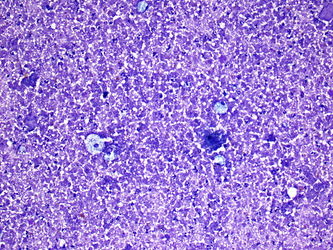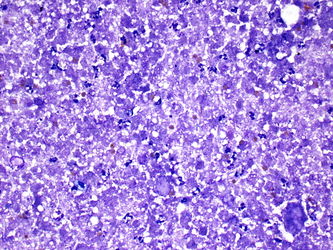Difference between revisions of "Cytologically Yours: Unknowns: 201401: Case 6"
| Line 6: | Line 6: | ||
CytologicallyYoursUnknowns201401-06-04.jpg | CytologicallyYoursUnknowns201401-06-04.jpg | ||
CytologicallyYoursUnknowns201401-06-05.jpg | CytologicallyYoursUnknowns201401-06-05.jpg | ||
| + | </gallery> | ||
| − | </ | + | ===Resident Questions=== |
| + | * <spoiler text="Diagnosis?"> | ||
| + | * Pseudocyst | ||
| + | ** Most common cystic lesion | ||
| + | ** Etiology is diverse (acute pancreatitis, recurrent chronic pancreatitis, trauma, chronic alcohol abuse) | ||
| + | ** Clinically patients present with jaundice, pain, nausea, vomiting, weight loss | ||
| + | ** Pathogenesis | ||
| + | *** leakage of pancreatic enzymes into parenchyma | ||
| + | *** necrosis and chemical peritonitis | ||
| + | *** inflammatory response and pancreatic secretion accumulation occurs and fibrous tissue walls off irritants which causes cyst formation | ||
| + | ** Localized collection of amylase rich pancreatic secretions, necrotic debris and blood | ||
| + | ** Most occur in the tail of the pancreas | ||
| + | ** Usually solitary and unilocular | ||
| + | ** Lack a true epithelial lining | ||
| + | </spoiler> | ||
| + | * <spoiler text="What are some of the cytologic features that lead you to the diagnosis?"> | ||
| + | * Variable acute and chronic inflammation | ||
| + | * Histiocytes | ||
| + | * Giant cells | ||
| + | * Necrotic debris | ||
| + | * Granulation tissue may be present | ||
| + | * No epithelium with atypia | ||
| + | </spoiler> | ||
| + | * <spoiler text="Differential diagnosis?"> | ||
| + | * Ductal adenocarcinoma with cystic degeneration | ||
| + | ** Atypia in the epithelium | ||
| + | ** Pleomorphic nuclei, cytoplasm variable (vacuolated to dense) | ||
| + | ** Cellular inflammatory background | ||
| + | ** Positive CEA and cytokeratin | ||
| + | * Any neoplasm will have epithelial groups and single cells with atypia | ||
| + | * Big diagnostic problem is the atypia that can be seen in the granulation tissue | ||
| + | </spoiler> | ||
Revision as of 18:32, 16 January 2014
Chronic inflammation of the pancreas (pancreatitis) is most often caused by alcoholism or biliary tract calculi.
Jaundice (or icterus) is a state of hyperbilirubinemia (increased bilirubin in the blood) in which bile pigment is deposited in the skin, mucous membranes, and scleras. This deposition of bile pigment results in a yellow appearance.
